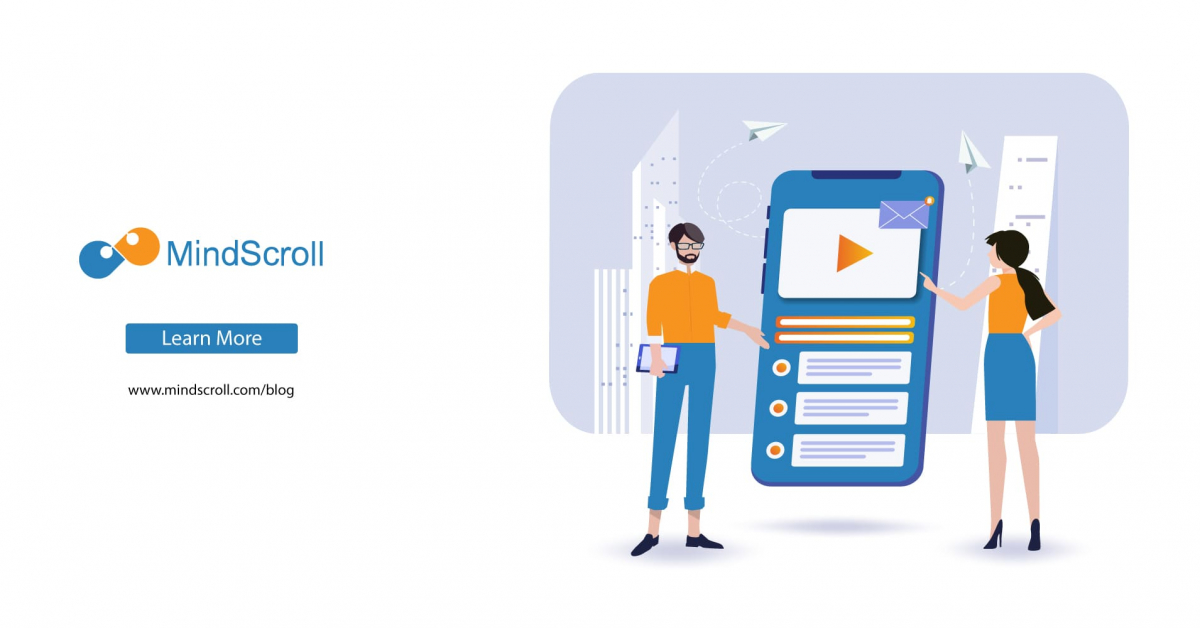Games gives you a purpose, rather a compulsion for getting the end results.
Gamification is not only about introducing playfulness and fun elements during the learning process, rather a theory of game-based learning, which develops a sense of fun in the learning process and challenges users at the right level.
In prevailing technological era, learners find online learning interesting, however, a one-way process. Applying a theory of gamification in non-gaming contexts such as education and work facilitate not only in catching learner’s attention and eliminating isolation, rather also engaging them and increasing their retention capabilities.
Consider the benefits your customer care executive could bring for the organization by being focused on making each customer experience exceptional in the same way as making efforts for clearing each level of a video game.
Gamification has completely changed the orientation of learning, from being a boring reading and listening activity to performing and winning.
Studies suggest that people retain more when made to learn through Gamified technique, promoting voluntary participation and user engagement. Gamification does not end up with assigning badges and points to learners rather creating an environment of enjoyment, by activating all sense and inducing self-learning.
“Games are the only force in the known universe that can get people to take actions against their self-interest, in a predictable way, without using force.” ― Gabe Zichermann
However, Gamification should be designed objectively, based on organizational requirement and learner’s knowledge level in order to achieve enterprise specific results.
Benefits
1. Goal Oriented Learning:
Gamification gives rise to goal-oriented learning, it encourages learners to perform in accordance with the organization’s expectations and pre-defined goals. With the visibility of goals and peer performances, along with attaching some tangible aspect with it, learners could easily get motivated to perform the desired results and earn on it. This not only creates an environment of competitiveness but also a framework of enthusiasm for winning.
2. Increases Learner Engagement:
Learners feel motivated and actively engaged when they know that their efforts are going to be rewarded. E-learning professionals apply gamification to constantly enhance user engagement with each of the course and level. Engaging learners in Gamified tactics and providing informal learning environment increases learner’s motivation to perform well.
Learners develops a lively spirit rather than remaining submissive during the learning process.
3. Improves Knowledge Absorption and Retention:
People retain more when they themselves perform and learn. Long, boring, one-sided lectures by a trainer makes less impact on learner’s knowledge when compared with engaging and interactive learning sessions. Being enticed with Gamified technique learners starts to get more involved with the material, ending up in retaining more. Having sundry levels to unlock and remain among the top performers, are only a few motivators that persuade learners to come back, learn and gain more knowledge.
4. Fun and Interactive:
Games have always been the best thing to reduce boredom, irrespective of the age and gender of the learner. Think of an instance, where learning itself becomes a game, and each new course along with assignment gives learners a new motivation to try? Gamification introduces a fun factor with learning process by allowing learners to interact, play and earn almost on each of their activity in the platform.
5. Intrinsic Motivator:
Gamification activates learner’s inclination and enthusiasm that fosters them to return again and complete the next level. Learners develop an inner zeal for taking up each of the course for receiving reward through badges and points. These small, non-monetary recognition in the form of rewards and points motivates the learners to give their best, try more and keep going.
6. Increased Competitiveness:
Leaderboard and Contests allow organizations to leverage their workforce’s competitive nature. Learners get to see their relative ranking and compete with others to improve their position in the organization.
Gamification serves instant data to the learner in order to draw their performance graph, by analyzing where they are, where they have to reach and how could they reach parallelly comparing their performance with colleagues.
Gamification can be implemented in organizations for adding a sense of fun, and enriching learners experience with some engaging activities. It can make your courses so appealing that learners don’t even realize they’re being involved in learning and training.
Gamification Module of MindScroll offers sophisticated user dashboard, with highly customizable badging, robust award functionality and interactive content type to maximize user experience. Gamification based training helps you to maximize your ROI and increase learner engagement, besides facilitating higher completion rates with better recall and retention.
LMS, Learning Management System, Cloud LMS, Gamification, Latest Technology Trends, Learning Technologies, Corporate Learning Strategy, Millennial Workforce




